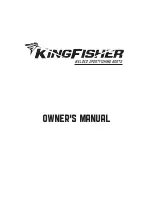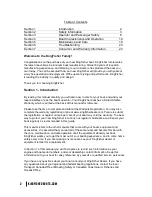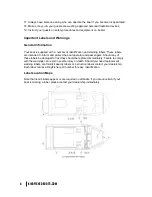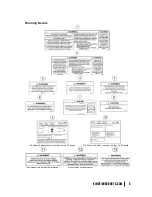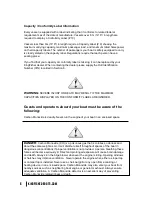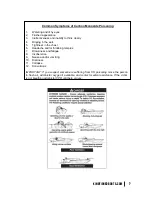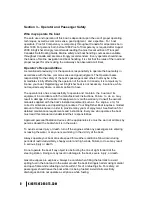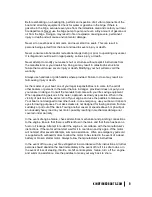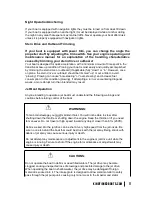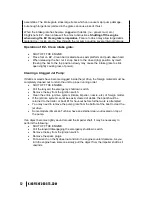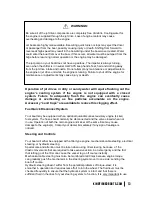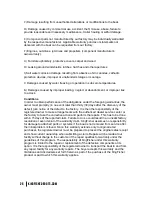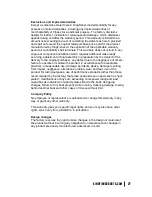
www.kingfisherboats.com
14
14
KINGFISHERBOATS.COM
the manufacturer’s recommended steering oil type. Steering should only be adjusted by
a qualified technician.
Consult your engine and control owners manual for instructions on operating or adjusting
your boats throttle and shift controls. Marine engines can only be started with the
controls in the “Neutral” position. Always shift your controls to “Neutral” before starting
the motor. If you
are
able to start your engine with the shifter in gear, have your
KingFisher dealer service the boat
immediately
to correct the problem. Your vessel’s
controls will also be equipped with a safety lanyard. This lanyard consists of a clip that is
attached to your boat’s engine controls and a snap-hook that attaches to the operator’s
clothing. If the operator is ejected from the boat or collapses, the lanyard pulls the clip
from the engine controls and shuts off the engine. Before starting the engine ensure that
this lanyard is properly in place and the clip fits snugly into its receptacle. For other
engine starting instructions consult your engine and controls owner’s manuals.
Instruments and Gauges
Your boat may be equipped with an electric fuel gauge, a tachometer and a voltmeter or
an electric fuel gauge and a multi-function gauge. Other gauges may be installed by your
dealership. For instructions on the use of your multi-function gauge, consult the gauge
manufacturer’s owners manual. Always be aware of your gauge readings. Low RPMs
can mean a fouled prop or jet intake, high RPMs can indicate prop damage or cavitation.
Return to your dealership for service if either condition persists. Your voltmeter should
read slightly above 12V. If the reading is too high or too low your battery or engine
electronics could be damaged. Return to your dealership for service.
Fuel and Oil
Consult your engine manufacturer’s owner’s manual for the proper type of fuel to use
and any appropriate additives. Your 4-stroke engine may either have a wet-sump oil
system which means that it has an oil filled crank case, or a dry-sump oil system which
means it has an oil tank. Your 2-stroke engine is oil-injected from a tank. In either case,
always check your oil before starting the motor. Consult your engine owner’s manual for
the location of your dipstick, the procedure for checking the oil level, and the correct type
of oil to use. Avoid filling your boat’s fuel tank to its full capacity and never park your
boat with a completely full fuel tank. Fuel expands when the surrounding air temperature
increases. This can cause your fuel system to overflow. Spilled fuel creates a fire and
explosion hazard, can cause severe irritation to skin, and can damage the paint on
your boat. Paint damage due to spilled fuel is not covered by your warranty.
Getting to Know Your Boat
Read all your owners manuals completely. Get to know where each of your switches and
circuit breakers are on the dash, and the location of in-line fuses for the bilge pumps and
other accessories. Use the various owners manuals provided with your boat and the check-
point diagram to learn where your check points are located and what the acceptable levels
and conditions are at each point. Get to know where your shut-offs are for power, seawater,
and fuel.


